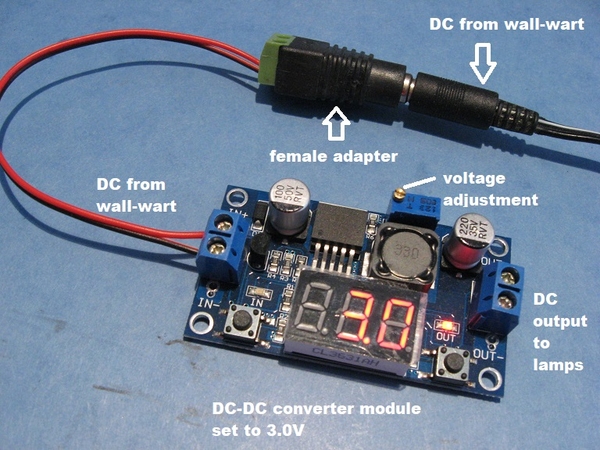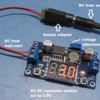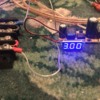Greetings.
I've read as many posts as I could on low voltage lighting and thought I was well prepared for the task at hand, but apparently even my electrical wiring expertise has left me clueless!
I purchased some LED 3 volt lampposts to add some nice finishing touches on my layout from a vendor from China on eBay. After having issues just getting replacement light bulbs for my Lionel station platforms, I figured I would go to the much more realistic, and hopefully reliable, LED lighting. These lights came with only a 3 volt option. They came with extremely small gauge wiring (like 30 or 35 gauge). They are a bear to strip sheathing off without breaking the wire and I have wound up soldering the lamp's wire leads up to a 22 gauge solid copper wire for easy connections.

That being said, I wired up the first bath of lampposts for installation. I bought a 120 volt AC to 3 volt DC plug in transformer with wire leads for me to connect to the new wiring for convenience. When I went to test each lamppost to make sure all the LEDs lit up, the lights gave off a reasonable brightness. When I strung two together, it was literally 1/2 as bight and when I connect 4, they don't light up at all. It was the same if I strung the lights together or wired them all to a single connection point. I have a total of 16 of these LED lampposts, so this is a problem.
From all of electrical knowledge, the operating voltage is what makes lights work. If they were AC, they could usually operate of various voltages. DC lights are specific. Now the amps (in this case millamps) refers to the amount of power flowing through the wire. If the amps or milliamps are too low, the light (or device) will not power up. If there re too many amps or milliamps, there will be no damage. If there is enough amps or milliamps, it should not matter how many lights there are (from what I understand). That being said, my observations so far are contrary to the above rule...and I need your help on this please.
Here are the details:
https://www.ebay.com/itm/LYC12...b:g:RwsAAOSwLa9UYNvD
https://www.ebay.com/itm/LYC08...d:g:H0UAAOSwrx5UYNtw
Both above light styles operate on 100mA current (no matter of it is the 2 LED la,ppost or the 3 LED lamppost).
http://www.traintekllc.com/min...src=prn#write_review
The 3 volt transformer above has a 200mA current rating...more than twice the required amps needed to illuminate the lampposts.
So given I apparently have a transformer that can provide enough power for the LEDs, then why in the world are the LEDs losing illumination by approx 1/2 with each extra lamppost either connected to a single point or strung together? I have 16 lampposts and each transformer is around $11.00 a piece. If I need to buy one transformer for each lamppost, I will be out around $200.00 before I am done! That doesn't seem right. Something must be wrong.

Also, if my understanding of electrical wiring is incorrect, why is the same wiring setup never a problem for the AC station platforms I wired together? If somehow the DC voltage is 1/2'd with each connected lamppost, should I be using like one 12 volt plug in transformer for every batch or 4 lampposts? I do have some resistors I could solder if I need to use a 12 volt transformer (I would use one resistor for all the lights tied together before they are connected to the transformer if I have to use one). Again, something is wrong here with either the product, the transformer my understanding of electricity or both. I bought the transformer so I could need need to mess around with the resistors.
Any and all assistance you could give me would be appreciated. Thanks for your time.

































